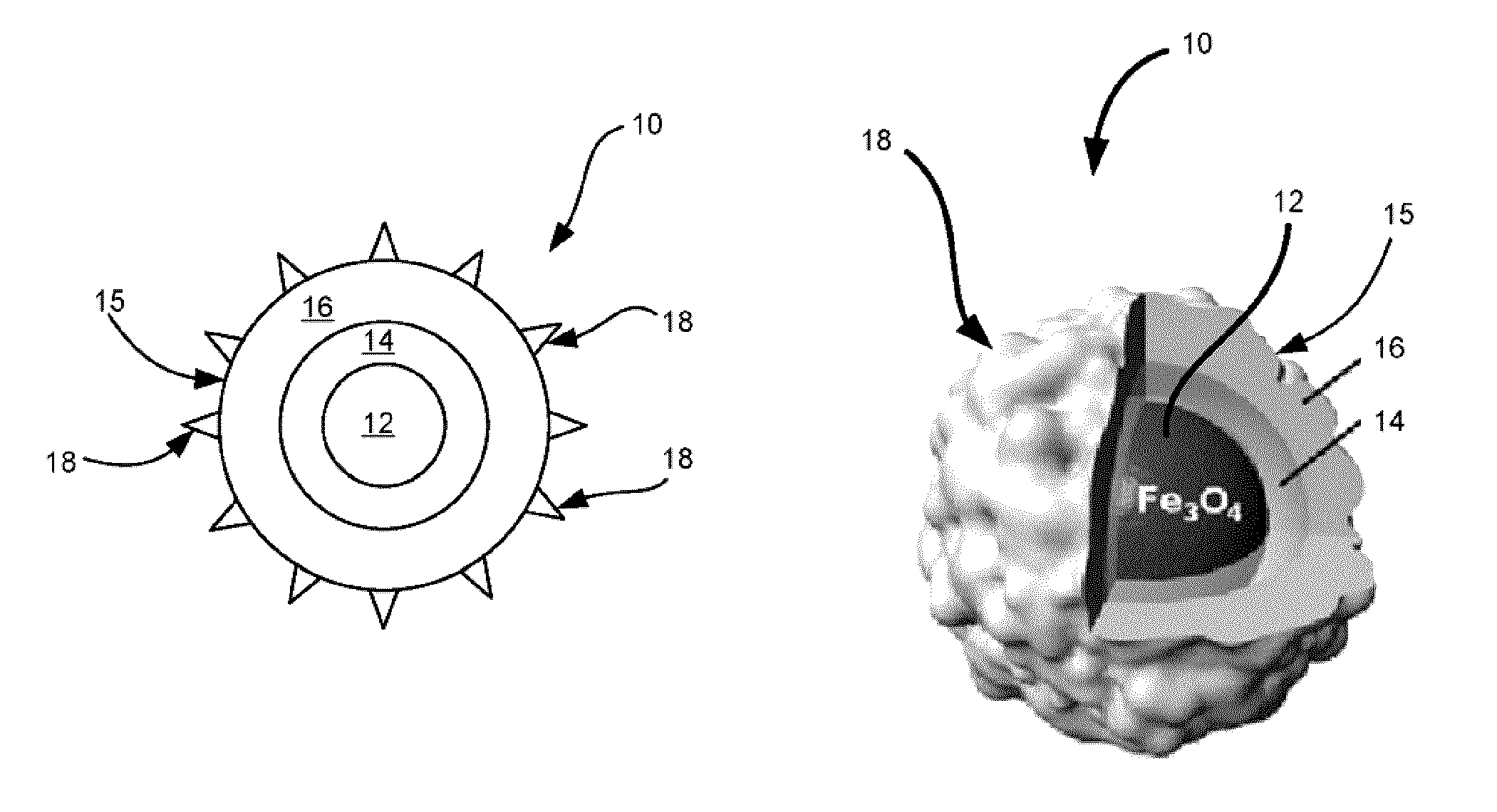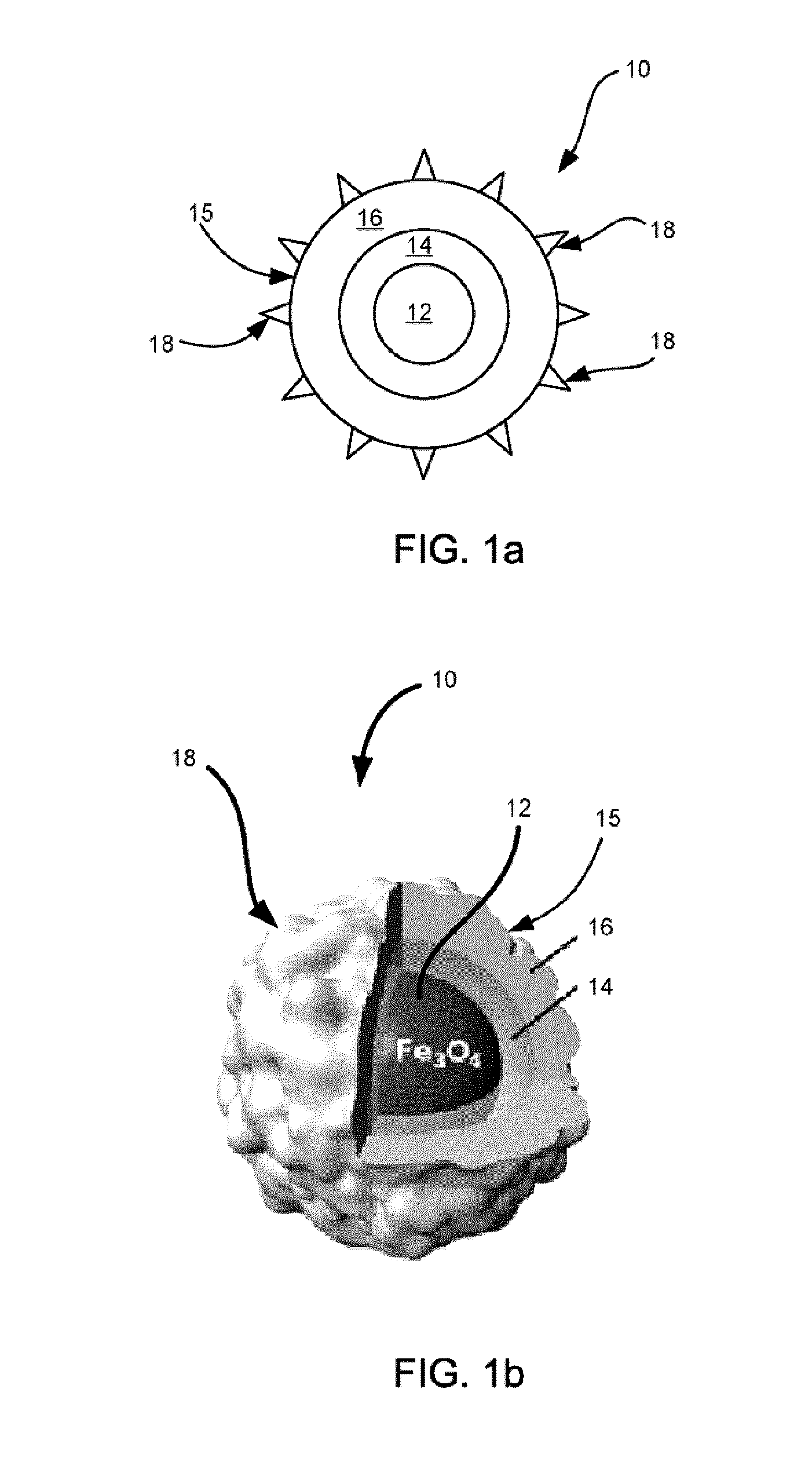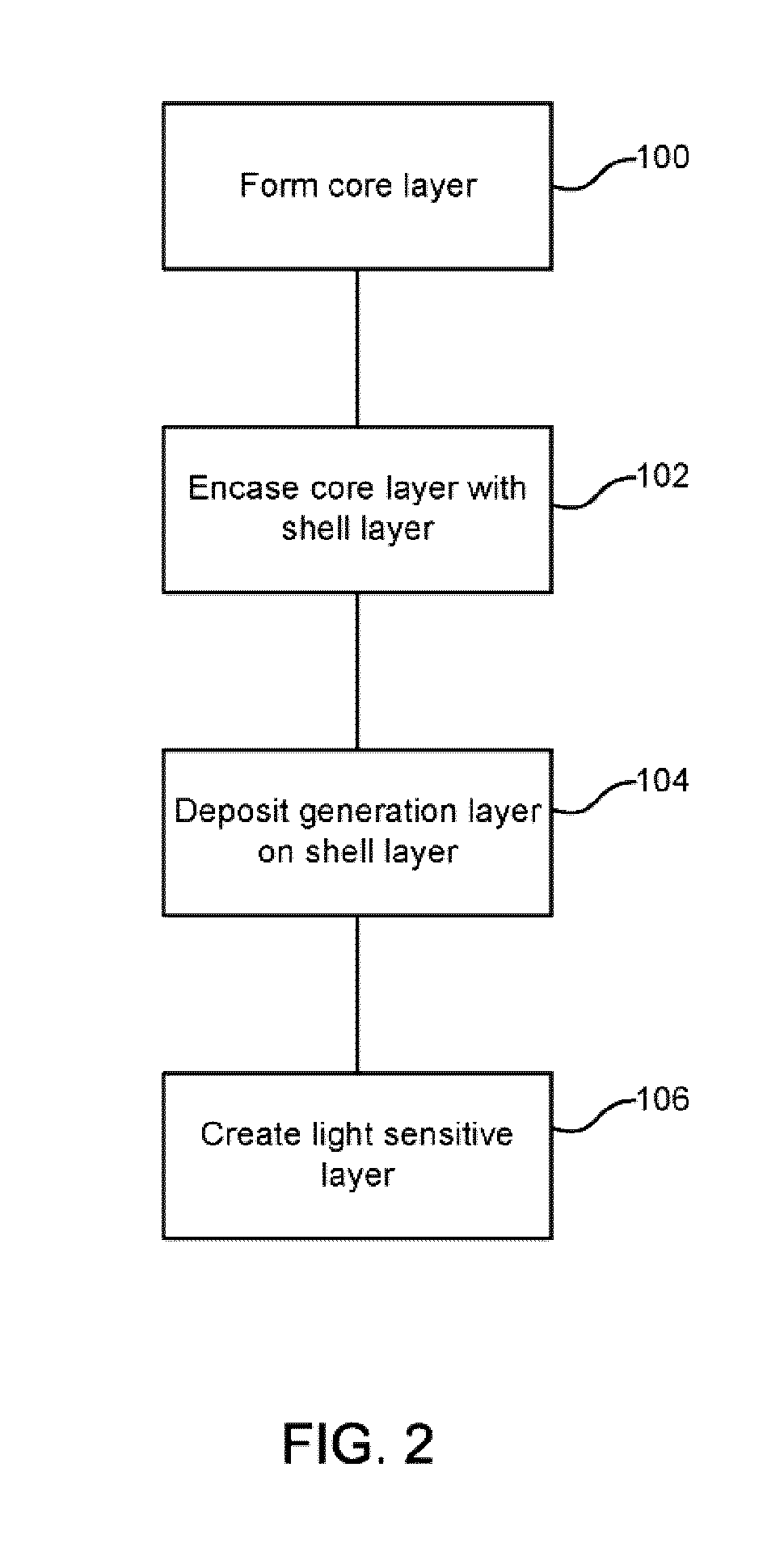Superparamagnetic photocatalytic microparticles
- Summary
- Abstract
- Description
- Claims
- Application Information
AI Technical Summary
Benefits of technology
Problems solved by technology
Method used
Image
Examples
Embodiment Construction
[0035]The present disclosure is directed at a method and apparatus for producing superparamatnetic, photocatalytic core-shell composite microparticles which may be used in water treatment processes. Each microparticle includes a core layer, a shell layer and a photoactive layer. In one embodiment, the photoactive layer may be a combination of a charge carrier generation layer and a light responsive layer or may be a single layer capable of charge carrier generation and being responsive to light. In the embodiment where the photoactive layer is a single layer, the photoactive layer may be modified to allow it to act as a photocatalyst when exposed to solar, visible or infrared light, in addition to or instead of the material's native ultraviolet light photocatalytic activity. The core layer of the composite microparticles contains multiple superparamagnetic nanocrystals, or nanoparticles.
[0036]The present disclosure is also directed at a synthesis of superparamagnetic, photocatalytic...
PUM
| Property | Measurement | Unit |
|---|---|---|
| Photocatalytic properties | aaaaa | aaaaa |
| Sensitivity | aaaaa | aaaaa |
| Charge carrier generation | aaaaa | aaaaa |
Abstract
Description
Claims
Application Information
 Login to View More
Login to View More - R&D
- Intellectual Property
- Life Sciences
- Materials
- Tech Scout
- Unparalleled Data Quality
- Higher Quality Content
- 60% Fewer Hallucinations
Browse by: Latest US Patents, China's latest patents, Technical Efficacy Thesaurus, Application Domain, Technology Topic, Popular Technical Reports.
© 2025 PatSnap. All rights reserved.Legal|Privacy policy|Modern Slavery Act Transparency Statement|Sitemap|About US| Contact US: help@patsnap.com



